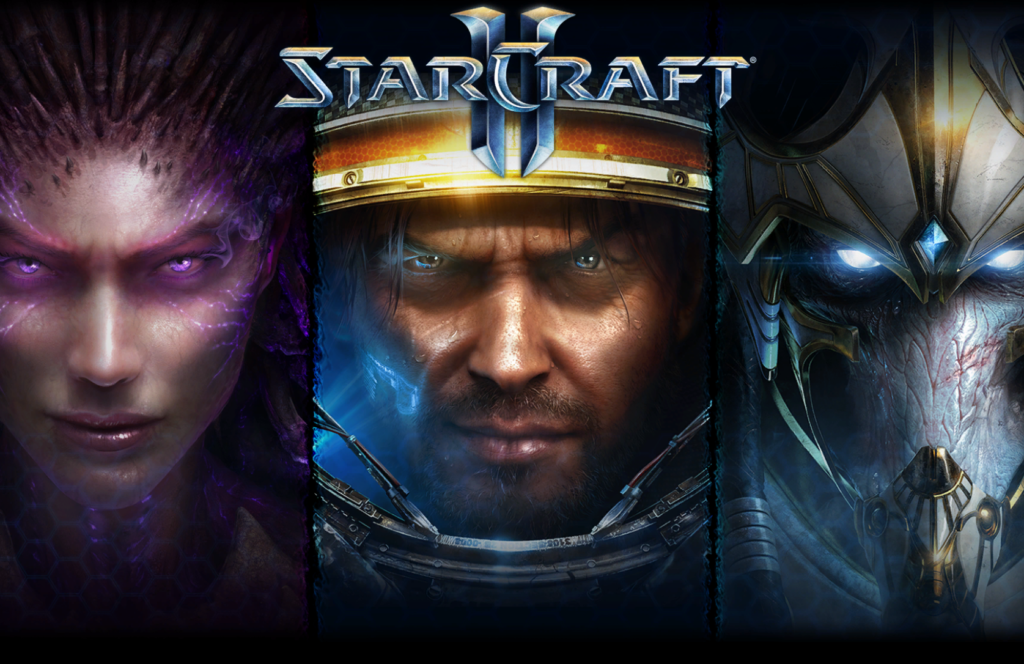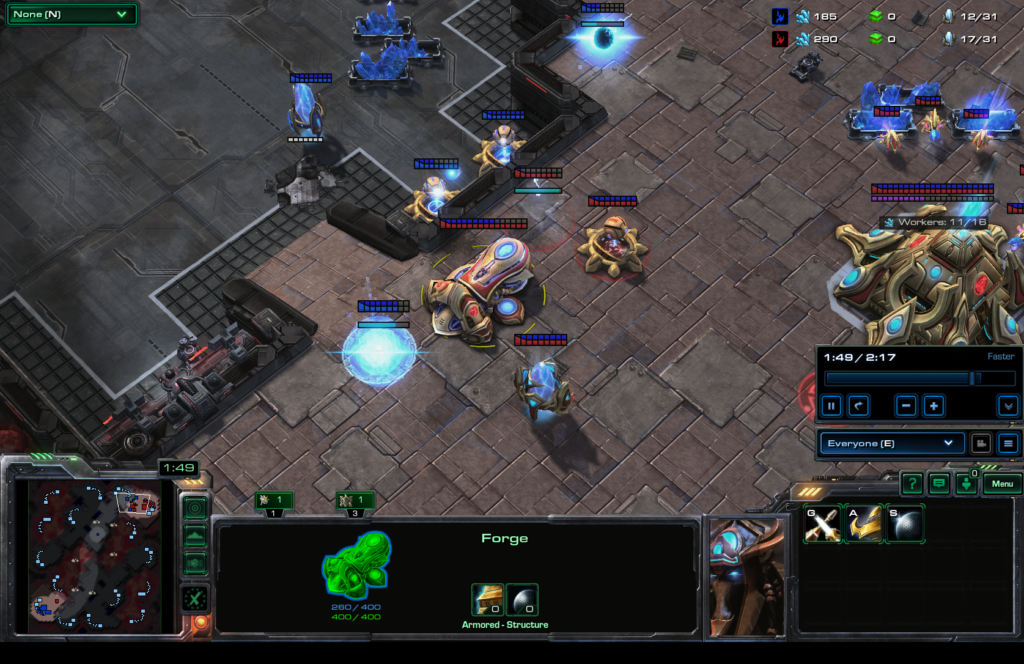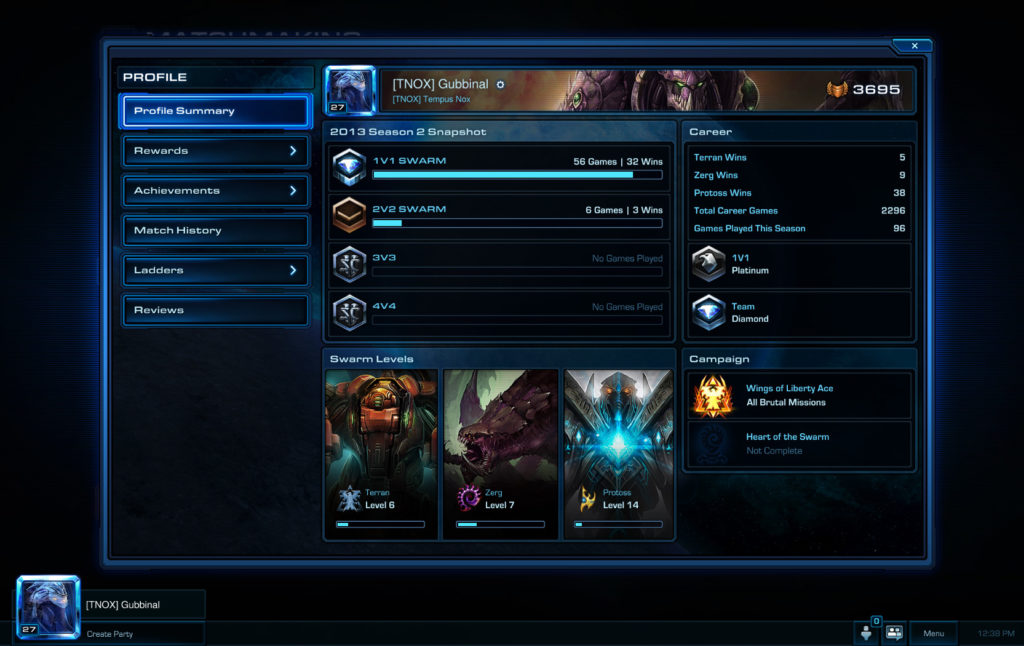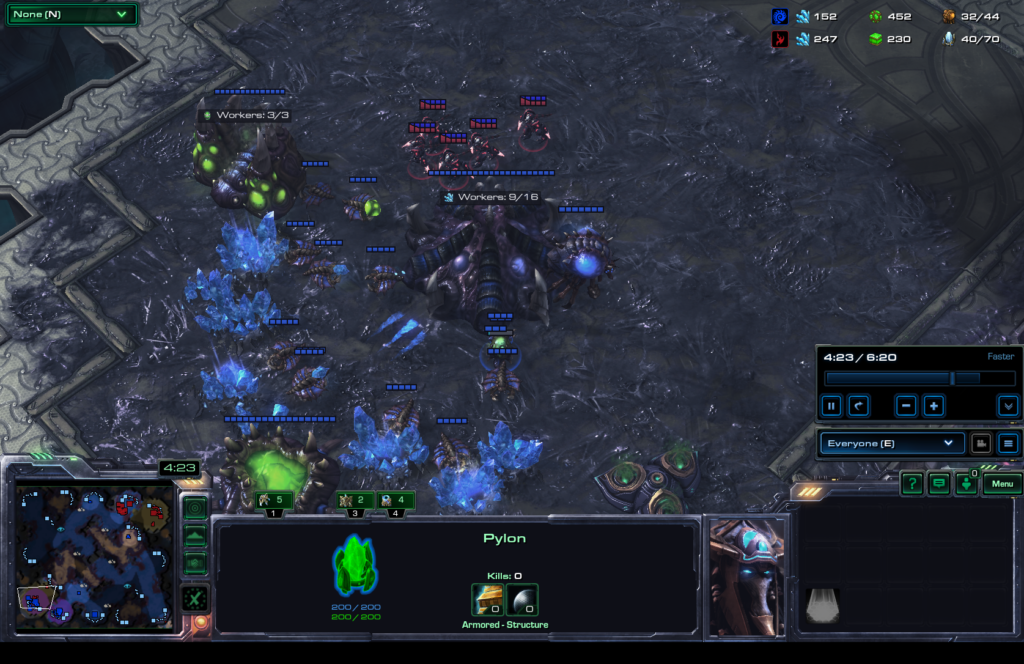That’s right, StarCraft II is number 2! Now, I know what you’re thinking—you’re thinking this guy hasn’t played anything but Blizzard games, and for whatever reason I’m obsessed with the number 2, or with sequels. You might be on to something with both of those observations—my brothers and I grew up in a largely Macintosh-based computing environment and Blizzard was one of the rare, cherished publishers that produced games for the Mac OS almost as often as they did for Windows or DOS. And as far as my love of the number 2 goes, well, I am the middle child.

But really, I’m just a fan of a really, really good game, and that’s what StarCraft II is. I’m also a fan of competition and professional sports—and the fascinating players that populate them—and the drama of wins and losses and that was what StarCraft II was, too. If the original StarCraft helped create esports, then StarCraft II was its chosen successor, and its rise in America and Korea as a competitive gaming platform seemed to mirror its predecessor’s achievements for a time. In many ways, SC2 was built to be a competitive gaming vehicle, meant to bring in not just the players but the viewers, those who would spend full weekends watching nerds from Brussels to Busan battle for gold and glory.

And it worked! From the start, I was sucked into this world of pro competition—I could never play at that level myself, but I wanted to watch the best of the best butt heads, all while hearing the stories and jokes of the tourney hosts and shoutcasters who colored in all the lines of strategy for viewers like me. No video or computer game before this or after has sucked me into the pro scene the way SC2 did; it was not a game but an entirely unique culture.

Part of my fascination with the broader scene was my own interest in the game: StarCraft II was a real-time strategy game that arrived in stores only after RTS games had been killed off as a genre. People had moved on: competitive gaming was either stuck in the stone age of StarCraft (in Korea) or Smash Bros. (elsewhere), or it was focused on the more-popular Massively-Multiplayer Online, First-Person Shooter, or Multiplayer Online Battle Arena (and, soon, Survival) games that had overtaken the landscape of modern gaming. But Blizzard didn’t care: a great RTS was spawning, and it would Zergling rush its way into our hearts, whether we knew it or not, in July 2010.

I wasn’t even going to buy SC2 at first. I’d played the original and StarCraft 64 plenty. They were fun, but I was done—I’d moved on. And yet that summer, SC2 appeared and with it came this whole new world of video game stardom, and I ate it all up. I loved the game; I lived the game. Guys like Husky and Day[9] and InControl (RIP) taught me so much about not just the game, but about strategy and planning and goals far away from it—all while making me laugh and yell through the wildest games.

And it was the pro players, too, from the enigmatic Idra to the aloof Naniwa, to the hilarious Rotterdam, to Euro-champ Stephano, to Scarlett and Snute, to the grinning Polt, the OG MC, to MarineKing and his crew, and to the unbelievable MVP and everyone in between. I knew them all, loved them all. They were a brotherhood. When I couldn’t rest during the worst year of my life, it was MrBitter and Frodan and the gang who sang me to sleep with the best of North American SC2. I never would have picked up the game (RTS was dead to me, too, and grad school was very much alive) except my two best brothers jumped on that ship with me, too, hooked me up with a new rig (thanks, Joe), and played with me long into the late nights for years (thanks, Andy). That’s what I really, really loved about StarCraft II: I was number 2, but I always had my 1 and 3 fighting right beside me.